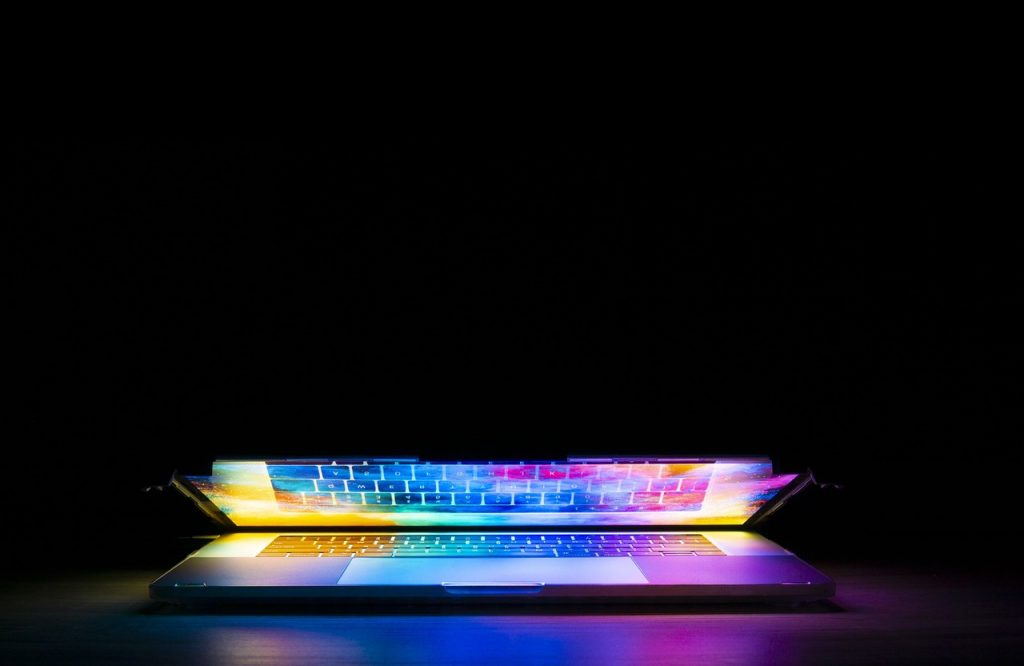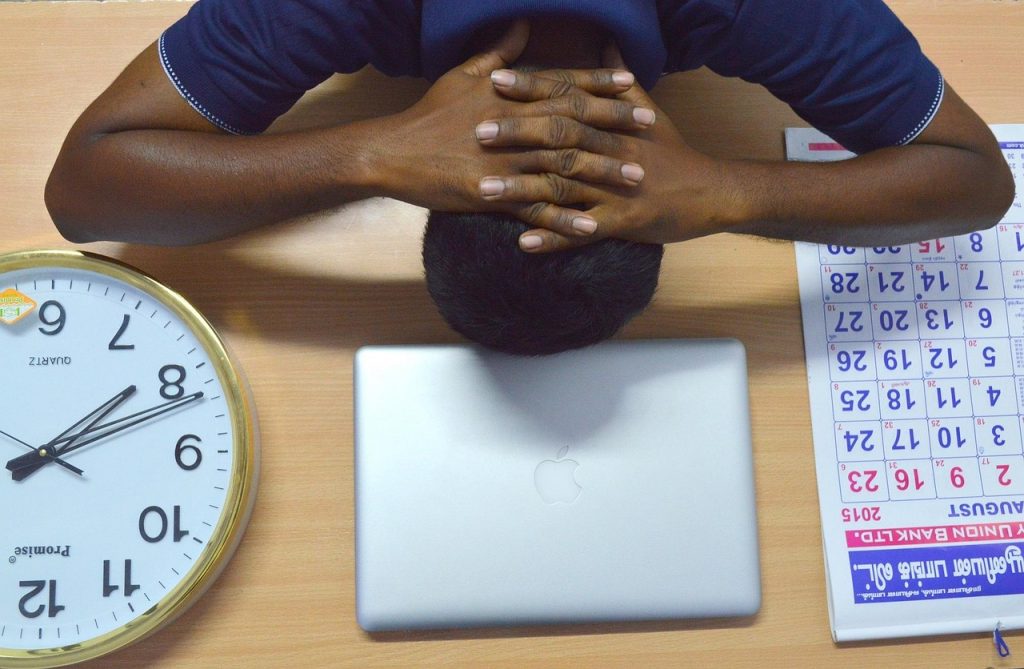
I think as a collective we just need a break from all things devices. Blue light, social media, doom scrolling, depressing news. We need to go outside, get hobbies that are hands-on, and go out with our friends. Just start living in the real world and get away from the digital highlight reel we see every day on social media. In other words we just need a digital detox.
There are so many positive things that come out of taking a break from your devices and just decreasing your screen time. I want to give you a guide to performing a digital detox. We will go over many science-backed reasons for starting a detox as well as techniques you could use to make this journey a bit easier.
What is a digital detox
A digital detox is where one dedicates a period of time to staying off their electronic devices and uses that time as an opportunity to reduce stress or focus on the real world. It is a periodic disconnection from the internet and social media; it involves strategic planning and goal setting to make sure you stick to your digital detox goals.
Why do we need a digital detox?
There is no doubt that being online and on social media for most of our modern-day lives is doing something to our brains. After a session of just scrolling, we often feel drained. The drained and tired feeling is often bypassed by us until it builds up and we just feel unnecessary overwhelm.
In fact there is a term for any negative impact on attitudes, thoughts, behaviors, or body physiology that is caused either directly or indirectly by technology: technostress. We all experience technostress whether we know the term or not. It’s impossible not to with our jobs and schoolwork mostly taking place online.
Depression and anxiety have only been rising since the creation of electronic devices and social platforms. These effects are especially present in adolescents. It is recommended by the American Academy of Pediatrics (AAP) that children over the age of 5 get less than two hours a day of screentime; unfortunately, many children get about six to nine hours a day of screentime.
A study done on adolescence showed that excessive screen time was associated with poor mental health and impaired mental well-being. A child’s brain should be used in a productive way, but in the day and age we live in, children’s brains are becoming more and more dependent on tech.
Not only does screen time affect adolescents and cause technostress, but it also impairs our sleep; exposure to LED versus non-LED screens produces changes in melatonin levels and sleep quality, which in turn decreases our cognitive performance. It also interferes with our circadian rhythms.
LED screens on computers and phones emit a slow-wave, blue light, which can interfere with the circadian rhythms that regulate sleep. If sleep has been troublesome, try looking into your electronic device usage. I’m sure solutions could be found there.
I hope you can see the effects of excessive screen usage. I’m sure there are so many more consequences we have to deal with that scientists don’t even know about. Take the initiative to stay off your devices when they are not needed. Your mind will be much clearer.
Signs You Need a Digital Detox

Sleep Disruption:
A study that was published in the Proceedings of the National Academy of Sciences concluded that even use of light-emitting devices had a negative effect on melatonin levels and also interrupted our bodies’ circadian rhythm.
Increased Anxiety and Depression Symptoms
It is common knowledge that spending more time on social media means worse mental health. A systematic review in JAMA Psychiatry found that “greater” social media use was correlated with increased symptoms of anxiety and depression. The findings suggest that the constant comparison and the feeling of FOMO from being on social media contribute to these feelings.
Phantom Vibration Syndrome
Phantom vibration syndrome is when you perceive vibrations from a device that isn’t really vibrating. Frequently thinking your phone is vibrating when it isn’t indicates hypervigilance when it comes to your device. Research that was published in Computers in Human Behavior found that 89% of undergraduates experienced phantom vibrations. Another finding from the study showed that higher levels of tech-related anxiety and dependence were associated with more frequent phantom vibrations.
Decreased Attention Span and Concentration
If you have a hard time focusing, it may be because you are used to the constant dopamine you get from scrolling on social media. Our productive work is as dopamine releasing, so your brain has to go somewhere to get that hit. Dr. Adam Gazzaley, a neuroscientist, conducted a study that showed continual interruption from electronic devices shatters our attention and reduces our abilities to engage in deep, sustained thought.
Physical Symptoms
If you feel a series of physical symptoms such as eye strain, neck pain, headaches, and repetitive strain injuries, that is a sign of excessive device usage. The American Optometric Association coined the term “Computer Vision Syndrome,” which affects 50-90% of workers. The symptoms include eye strain, headaches, and blurred vision. There was also research done in surgical technology that found that looking down at a device puts 60 pounds of pressure on your cervical spine.
Neglecting In-Person Relationships
Constantly choosing to interact with your device instead of with people or feeling anxious or uneasy without your phone in social settings. Research done by Sherry Turkle, an MIT professor, showed that the simple presence of a phone messes with the sense of connection and decreases the conversation quality.
First and Last Thing Daily
If your phone happens to be the last thing you reach for at night and the first thing you reach for in the morning, you have developed a dependency pattern. Psychologist Dr. Larry Rosen notes that this behavior creates a cortisol response, which keeps your stress levels elevated
Compulsive Checking Without Purpose
Compulsive checking is when you check your phone subconsciously without a reason for checking it. Research published in Frontiers in Psychology classified problematic cell phone use as checking your phone 85 times per day, most often unconsciously. The study also found this behavior activates the same neural pathways as behavioral addiction.
Digital Detox Techniques
Nature Walks
When was the last time you went for a walk? If you recently went on a walk, were you on your phone or listening to music? During the next walk you take, I want you to be completely present. No distractions of any kind. Just focus on your breath, the sounds you hear all around you, the nature, and the people walking by. Do anything you need to to stay present.
A study that was published in Environmental Health and Preventive Medicine found that forests encourage lower cortisol levels, lower pulse rates, lower blood pressure, greater parasympathetic nerve activity, and lower sympathetic nerve activity than do city environments. The participants in that study also showed lowered stress levels after just 15 minutes of being outside in nature.
Analog hobbies
Get a hobby that could never take place on a screen. Learn the piano, try crochet, learn origami, paint, color—there is so much you could do. These activities put you in a flow state where you forget you even have devices.
Research in Frontiers in Psychology showed that engaging in creative activities created an abundance of positive effects and psychological well-being. Creative activities led to participants feeling increased positive emotions and led to vigorousness the next day. Participants also felt more energized and enthusiastic.
No entertainment or stimulation session
This is basically when you carve out 10-30 minutes a day with absolutely no distractions. No books, no music, no nothing. It should just be you sitting quietly, listening to your surroundings and paying attention to the thoughts in your head. We all need a break like this. This break is not to punish yourself; you deserve to have a distraction- and stimulation-free time period each day.
Research published in Academy of Management Discoveries concluded that boredom sparked creativity. Because the bored feeling signals to individuals that their current situations lack meaning, which leads to consideration of brand new outlets and alternative goals. Participants who performed boring taks before creative tasks did better than control groups.
Phone fasting with physical challenges
Combine your digital detox journey with tasks that physically inhibit phone usage. For example, rock climbing, boxing, marathon training, or long-distance hiking. This makes the withdrawal symptoms from being away from your phone more manageable.
A study in Neuroscience & Biobehavioral Reviews concluded that aerobic exercise frequently enhances mood and reduces anxiety. Exercise also releases dopamine, serotonin, and norepinephrine, which are the same things that are released when you use social media, which makes it a great replacement device during your digital detox journey.
Social media breaks with accountability partner
I think doing a digital detox alone is nice, but having a partner gets rid of the feeling that you have to do it all alone. It would make the experience 10x more fun, and you will have to hold each other accountable. It’s hard to hold ourselves accountable but easy to hold others accountable. You could also do some of your analog hobbies with your partner. Make it fun!
A randomized controlled trial published in Cyberpsychology, Behavior, and Social Networking found that those who participated in the one-week Facebook break showed greater levels of satisfaction and significantly better emotional lives. Compared to the control group.
Dopamine Fasting
Try your absolute best to reduce your dopamine-producing activities (social media, TV, junk food, gambling, substance abuse). Not all of these have to do with a device, but dopamine is dopamine, and if dopamine is getting released in an unhealthy way, you should cut it out.
Research in Nature Communications showed that dopamine plays a big role in motivational control and that constant overstimulation leads to desensitization. When dopamine is constantly being released, our baseline dopamine levels drop, requiring intense stimulation to get the same response. Abstinence from dopamine allows our receptor sensitivity to reset.
Device-Free Staycation
If you don’t have the finances to book a device-free retreat, don’t worry; you can easily have a device-free staycation in the comfort of your own home. Have someone else hold on to your most tempting devices while you engage in planned offline activities. Maybe you could go to the mall (you may need your phone), go for a walk, book a class, or cook something new—the possibilities are endless.
A study published in Computers in Human Behavior looked at participants in a device-free retreat and found that there were significant reductions in stress and an increase in mindfulness and life satisfaction. Disconnection from technology reduces anxiety related to constant connectivity and increases present moment awareness.
Make your mornings device-free.
Your mornings are so important. If you start off your day with being on your phone, the rest of your day will mirror that decision. You should be as productive and focused in the morning as you can be. Make the first 30-60 minutes of your morning and make it tech-free.
Research in the Emotion journal found that positive morning routines influence and affect productivity throughout the day. The study showed that those who started their days without digital interruption reported higher positive effect, lower negative effect, and better task engagement compared to those that started their day with digital device usage.
Make Tech harder to access
Intentionally make technology harder to access. Use website blockers, set time limits for certain apps, and put your devices in another room. Make your devices inaccessible in any way you can.
A study in the Journal of Consumer Research showed that putting a measure to stop a bad habit from continuing reduces engagement. When environmental cues are disrupted and accessibility is reduced, automatic actions are reduced by 60%, which makes way for conscious decision-making to return. By simply adding one extra step to reduce social media, usage was reduced by 40%.
No devices 2 hours before bed
I love putting my device away two hours before bed. At first it’s difficult, but as time goes on you start to enjoy ending your day off with no device present. Instead try and do yoga, journal, or sit quietly. Just reset your mind for the next morning. Whenever I do this, I always wake up the next morning with a clear and peaceful mind.
Research published in Sleep Health found that a technology curfew before bed significantly improves sleep quality, duration, and next-day functioning. There was a decrease in the time to fall asleep by an average of 23 minutes and an increase in total sleep time by 41 minutes.
I hope you use some of these strategies as guidelines during your digital detox journey. And remember, your digital detox journey shouldn’t just stop after the set time is done. You should continue these healthy habits surrounding device usage forever. It is never a good thing to spend your time doom scrolling, and it does not feel good to be dependent on your devices.
I believe you have everything you need already to start your digital detox. It is needed in this day and age. You don’t need to go on some retreat in Bali to do a digital detox. Just use your free time for analog activities. You will end up feeling so much calmer and less overstimulated.

Leave a Reply